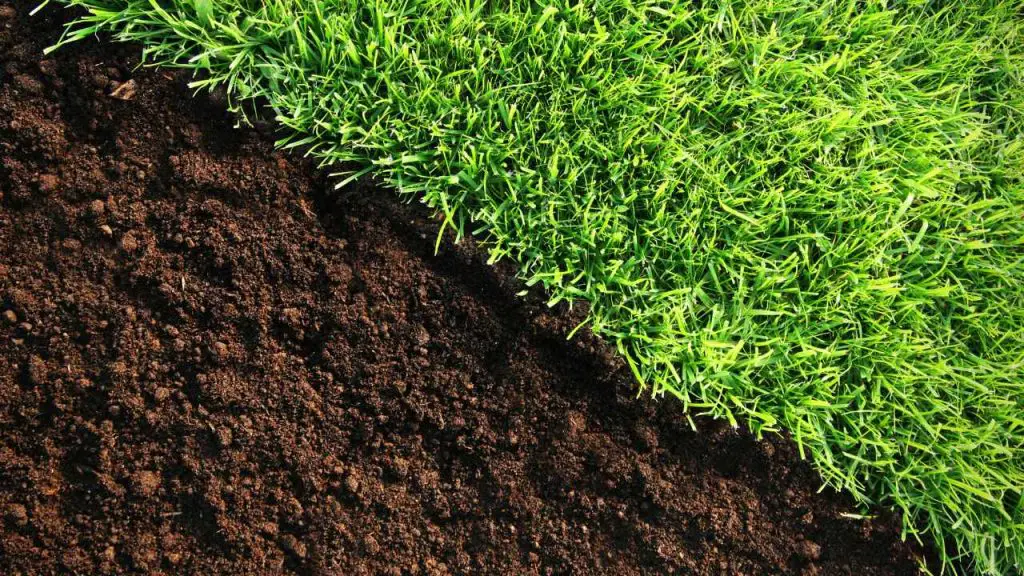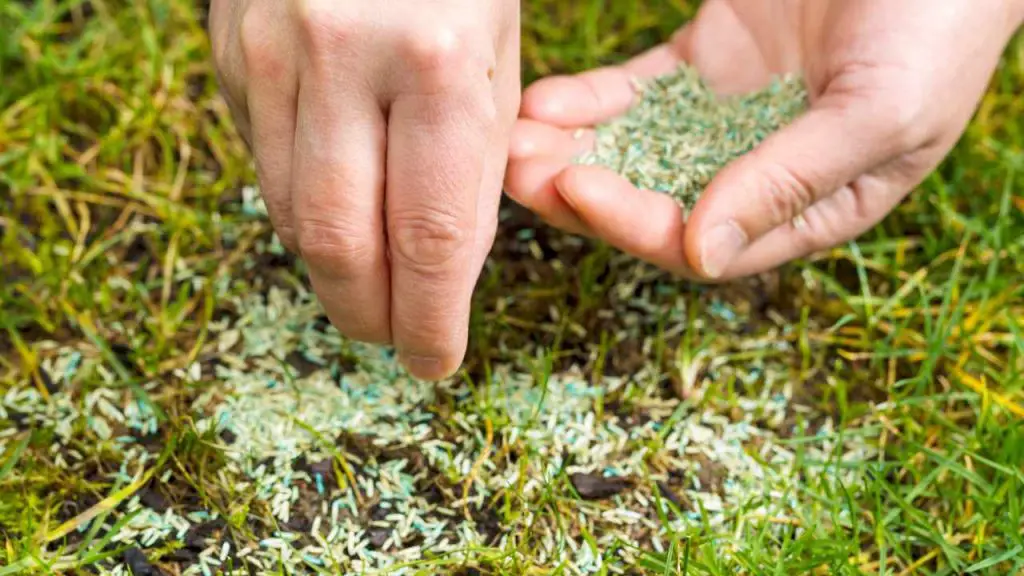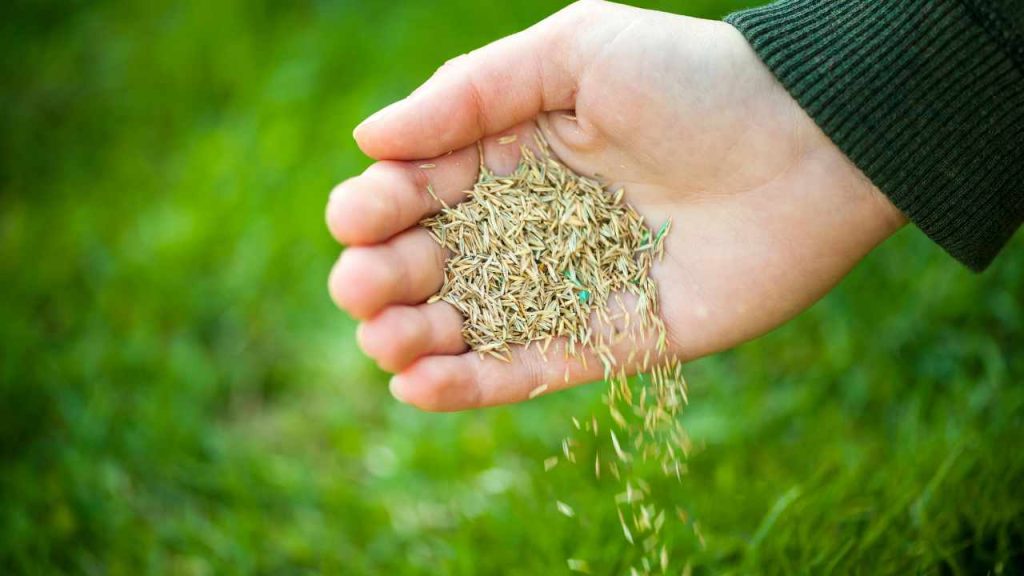If you are interested in gardening, you must like your lush green lawn. If the soil of your garden is dry, compacted, and not looking good for starting a perfect new lawn.
It is not a dream to have a lush green lawn on hard dirt. By using the right tools and applying good care practices you can grow a perfect loan.

Causes Of Hard Dirt
Plants Can’t survive in hard, dance, and compacted soil. If the ground of your garden is made up of clay then it will become so compacted that there is less space for air and water.
First, you should examine the reason for the hard ground in your growing area. Your close inspection will help you to avoid certain mistakes that cause dirt.
You should identify the problem before planting the grass seeds. Soil analysis will save time, money, and effort. A soil test will help you to determine the main cause.
A pH test also helps to indicate the type of soil, for instance, the pH level of the clay soil shows higher alkalinity. The following are the reasons that caused hard dirt.
- CLAY SOIL
It is very difficult to grow plants in clay soil. All the soil contains minerals, air, water, and organic matter. Clay soil is a type of soil that is very compacted and without moisture, it will become very hard.
This tightly packed soil is very dense and sticky. This type of soil is very heavy and harder to break. Clay minerals form in the soil when rocks are in contact with water, air, or steam.
Weathering and erosion of rocks is also the reason for forming clay. Clay soil has moisture and nutrients but very poor drainage this is the reason that the roots of the plants can’t penetrate.
- CONSTANT FOOT TRAFFIC
This is another reason for making the ground hard. Food traffic can squeeze the air between the soil particles. This can increase the density of the soil and the size of the pores is reduced. In such compacted soil water can’t penetrate the soil. The roots of the plants can’t expand in the soil.
- NEGLIGENCE
Land that is neglected for a long time can also become very compact and hard. To make the soil aerated and loose you need tilling and shuffling.
How To Plant Grass Seeds In Hard Dirt?

I know it is not an easy task to grow grass on hard dirt but you can do it with some extra dedication and you can achieve your goal. Compact dirt can be a problem because the seeds of the grass need good soil contact.
For growing a healthy loan the quality of the soil plays a very influential function. Following are some simple steps, after following them you can easily improve the quality of hard soil and create an ideal lawn.
STEP 1: DO THE SOIL TEST
The texture of the soil plays a very important part in the growth and development of grass. Since you are dealing with hard clay, you must do a soil test before doing anything.
A complete analysis of soil will tell you about the deficiency and need of the soil of your ground. The best way of doing the test is digging about 10 different places on your ground to prepare a sample.
Now make a small portion of each of them and prepare a perfect sample for the soil test. A soil testing center near your home will give you a complete result about your soil. This analysis will show the amount of sand, clay, silt, and organic matter in the soil.
STEP 2: AERATE THE TOPSOIL
Your lawn depends upon the quality, color, and density of the soil. You should maintain the health of the soil, fertilization, and watering. The grass will take all the nutrients from the soil so you should not compromise the health of the soil.
If the soil is hard and lumpy then Water will not run off easily. For improving the structure of the soil and allowing it to penetrate water, nutrients, and air in the soil, You need a special machine aerator that helps to pull out plugs in the soil.
When you aerate the soil it will become more crumbly and friable that allow the roots to grow and spread in the soil easily. In healthy soil, earthworms and other microorganisms can survive and make it more fertile and full of nutrients.
The best time for aeration of the soil is from mid-March through April because at this time due to spring rain, the soil becomes softer and you can easily aerate it.
STEP 3: TILL THE HARD GROUND
The soil that contains high clay particles becomes very compact and hard. This type of soil has poor drainage which is not good for a perfect lawn. You can improve the quality of the hard soil by tilling it.
You can till 10 to 12 inches of the dry soil surface. If the soil is severely hard and compacted then you can also use a garden tiller that can be used for this purpose.
For performing this action, you can till the entire ground in a back-and-forth motion in one direction. Now repeat the same steps of tilling again but in the opposite direction. If you find any rocks, roots, and debris in the soil then remove them.
STEP 4: MIX WITH FERTILIZER
Before sowing the seeds of grass, it is better to fertilize the soil to make it more rich and full of nutrients. Apply a large amount of grass seed fertilizer on the top soil.
You should till and mix the fertilizer in the soil several times, it will help to level the land. Now leave the soil to settle for some time. A lawn roller will also help you to make the soil more firm.
You can also add a thin layer of compost. It will also help to retain the moisture in the soil. The addition of compost will make the soil lighter and softer.
STEP 5: SELECT THE RIGHT SEED
It is a challenge for you to grow grass in hard soil because it is very heavy and the seeds of the grass can’t germinate easily. You have already till the ground and fertilize it.
The next step is the selection of grass seeds for your ground. The quality of the seeds plays a very significant role so you should select the best grass seeds for hard soil. Following is the list of adequate grass seeds for hard soil.
Keep Reading:
- What Flowers To Plant In The Fall And Winter?
- 20 Shade-Loving Flowering Plants
- Best Flowers To Grow For Bouquets

Best Grass Seeds For Cold Climate
You should select the seeds according to the climate in which you are living. Following are the seeds that are best for cold climates.
1- TALL FESCUE GRASS
The first type of grass seed that is included in our list is tall fescue. This type of grass variety has a very deep root system and can grow well in clay soil. Make sure this cool-weather grass variety receives full sun exposure and regular watering.
2- PERENNIAL RYEGRASS
If you are looking for such a grass variety that can germinate very quickly then you must select perennial ryegrass. This variety is also ideal for growing in clay soil because of its robust roots. The other important fact about this perennial ryegrass is that it needs little maintenance.
3- KENTUCKY BLUEGRASS
Another perfect variety that can easily adjust to the cold climate is Kentucky bluegrass. This variety of grass is perfect growing for golf courses, playgrounds, sports fields, and four front lawns.
Best Grass Seeds For Warm Climate
If you are living in a warm climate then you can select one of the following seeds.
1- BERMUDA GRASS
This variety is a vigorous grower and can become invasive if you did not check it regularly. You should keep the soil moist with regular watering. You can select Bermuda grass for high-traffic areas.
2- ZOYSIA GRASS
This is a perennial grass variety that loves to grow in hot climates. Zoysia grass has a deep root system that can adjust in hard dirt.
Although this type of grass can easily adjust in a drought, you should water this regularly especially in dry weather because it grows well in moist soil.
3- BUFFALO GRASS
This is a low-maintenance grass variety that needs minimal care and watering. You can select this variety of grass for your lawn if you are living in a warm climate.
STEP 6: PLANT THE GRASS SEEDS AND COVER THEM WITH TOPSOIL
Now your ground is ready and you have selected the right variety of grass seeds the next step is planting the seeds in the ground. Sprinkle the seeds over the ground.
The next step is mixing the soil with the seed with the help of a rake. When the seeds contact the soil properly then it will encourage the germination process.
STEP 7: WATER
The seed will not germinate if they don’t get water on time. As you are starting a new lawn on hard soil then you should maintain the frequency of water so the seed can sprout easily.
But you should avoid over-watering because it will discourage the growth of deep roots. You should follow the practice of light watering because it will keep the soil moist and aerated. make sure the top 1 inch of the soil always stays moist to germinate the seeds.
When the seeds germinate then you should increase the watering frequency and the top 2 to 3 inches of soil should always keep moist. Mid-morning is the best time for watering your lawn because the sun is pleasantly warm.
How Long Will It Take Your Grass To Grow?

Generally, the germination time period of grass can be from 5 to 30 days. For a cold climate, it will take longer. Weather conditions play a very important role in the growth of grass. Following are the three main factors that contribute to the growth of grass seeds.
1- TEMPERATURE
You can’t deny the importance of temperature in the growth of any kind of plant. This is a fundamental factor that determines how long your grass will take to grow. Warm temperature helps to encourage the germination process fast.
2- SEASON
You should choose the variety of grass seeds according to the season. You will not succeed in creating a perfect lawn if you do not choose a specific kind of grass seed according to the season.
3- SUNLIGHT
Plants can’t make their food without the presence of sunlight which means it is another important factor that plays a critical part. If you are growing grass in a shady area then you must select a species of grass that can adjust well in such circumstances.
